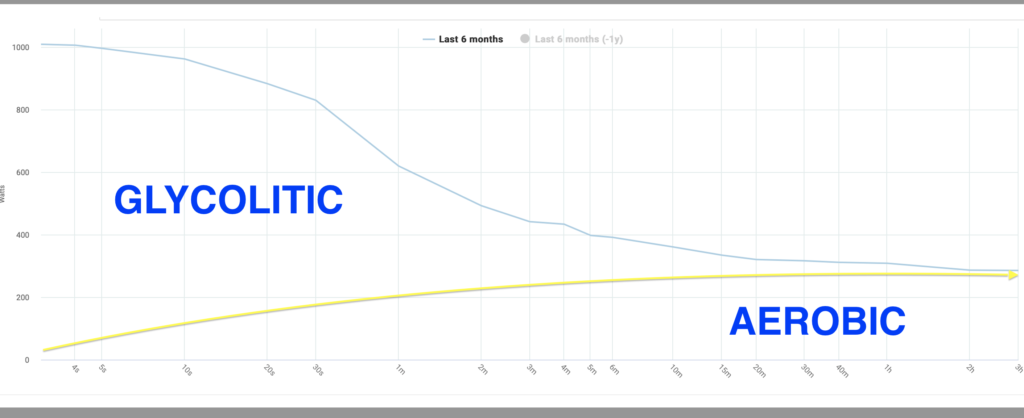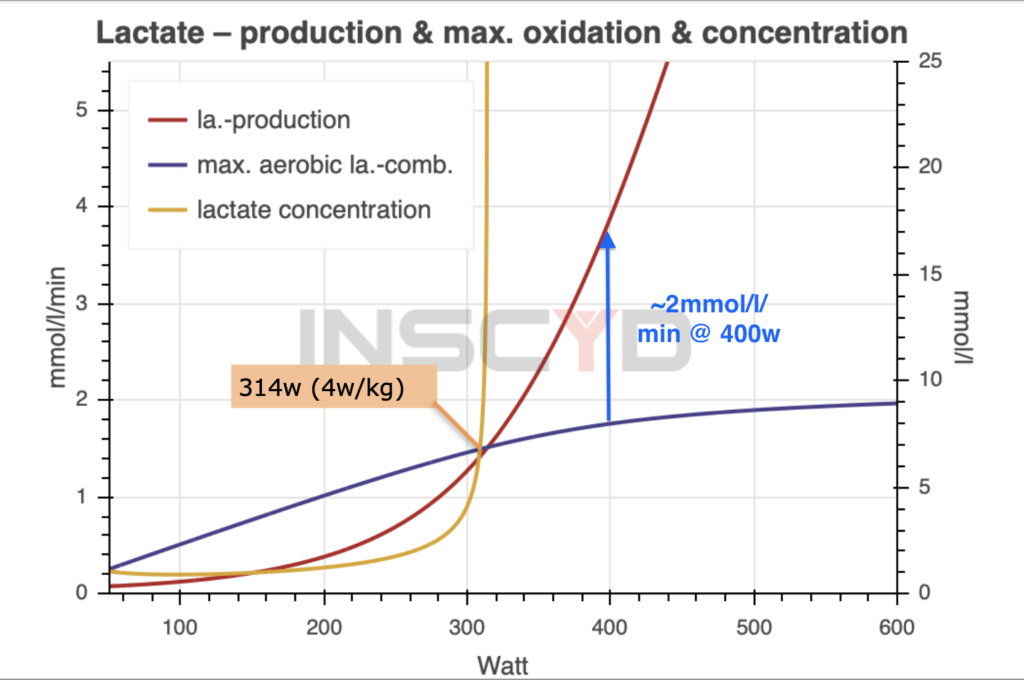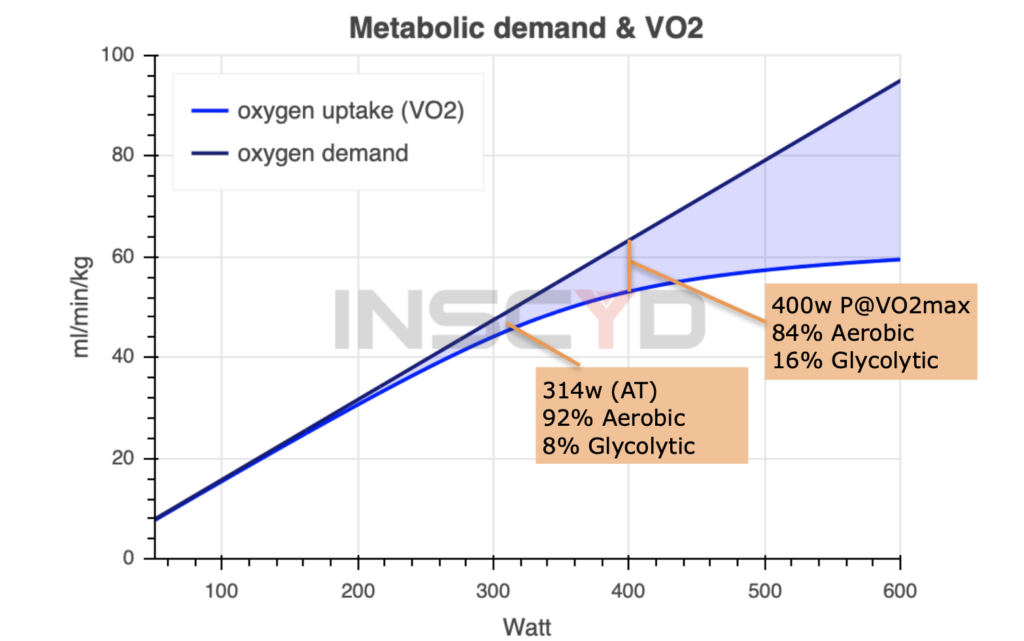Over the years I’ve often been asked a similar questions. “Whats the best session for improving my X min power?” “I was looking at my power curve and..“
Worshiping at the alter of your power curve is an easy pitfall to get caught in. It’s you on your best day, who doesn’t love themselves on their best day?
People seem to gauge their worth as a rider on their FTP and now more so, a power curve, as more training platforms make use of this data point.
Whilst it does have its uses when it comes to creating TT, Hill Climb or sustained power interval targets (a maximal effort). It gives little indication of how your power is created which is the more important insight when thinking about training.
Think about the energy systems behind how a power curve is made up.

This is an oversimplification but you have two main energy systems creating your watts. The AEROBIC system which uses oxygen to deliver working muscles fuel via breaking down fats/carbs and ANAEROBIC (Glycolytic) system which uses only carbohydrate to deliver fuel to the muscles.Burning carbohydrate produces lactate which at a certain blood concentration causes the muscles to stop contracting. Bad. But aerobic metabolism actually uses this lactate to help create more fuel for the muscles. Good. If your aerobic metabolism can clear the lactate faster than you are producing it, your muscles can carry on contracting forever (not forever, but you get the point). More power means more fuel for the energy output, but the aerobic metabolism isn’t very fast. There comes a point when you produce more lactate than you can clear and your blood lactate concentration rises until you reduce the energy output (ride easier).

At any point on the power curve these systems are working. The important part is to understand the ratio for a given power.
Whats the key factor in all this.. How much lactate can you recycle = How much oxygen can you utilise: VO2Max.
Fundamentally training is very simple. Raising your VO2 max, raises everything. The aerobic system is the foundation. If you can do 400w 95% aerobically your world class. You’re going to be able to 500-600-900w by proxy.
How do we raise VO2 max? Like anything TRAINING LOAD.
The aerobic system is extremely well developed even if you did 0 exercise. You are alive so your aerobic system is well developed. That means it’s hard to get it to improve. If you want big biceps you do bicep curls. If you wanted even bigger biceps you do more bicep curls. It’s the same for VO2 max.
Fine Jake, but there comes a point when I’m doing 250 bicep curls a day. You saying I do 300?
“No you’re better off doing 50 a day with a heavier weight.” Intensity (in this case weight) + Volume = Load
“So less 5h rides and more 5 x 5min sessions then!”
“Hold your horses there Benny-Boy”
The problem with intensity is.. there is a point at which your aerobic system is less involved in producing the power AND the recovery time takes longer meaning you can’t do more the next day. Training load is cumulative, so the more time you can spend with maximal aerobic contribution for minimal glycolytic contribution = bigger VO2 Max training adaptations.

Whats the best way to improve 5min power?
Increase VO2.
Whats the best way to increase VO2?
Increase training load.
So to answer your specific question Ben…
It makes little difference if you’re doing 5 x 5 min sessions vs 4-7min. Our speed session and hard start efforts will do a much better job. A hard effort to start brings lactate super high, which gets the muscle cells tolerating higher lactate concentrations. Then you go just below threshold to get your cells working on recycling the lactate (a key component of VO2 max). Plus this has the added benefit of reducing the muscle damage of the session compared to something like 5 x 5 mins at well over threshold. Meaning you’ll be feeling good for races and you can continue to stack good week on good week.
